
|   |

|   |
Time tested splendor of classicism - V. Kaladharan e-mail: kaladh@rediffmail.com Photos courtesy: Madras Music Academy January 17, 2024 The mother of the useful art, is necessity; that of the fine arts, is luxury. The former have the intellect for their father; the latter, genius, which itself is a kind of luxury. - Schopenhauer At the very outset I must confess that I was unfortunately forced to miss the first and the last day of the Madras Music Academy Dance Festival this year. Frankly I am the prisoner of a certain sensibility when it comes to music and dance. Therefore, my reflections on the recitals of both might lack the luster of objectivity. Some of my observations are probably prone to prejudices too. In short, my overview of the recitals is based on convictions, not knowledge. 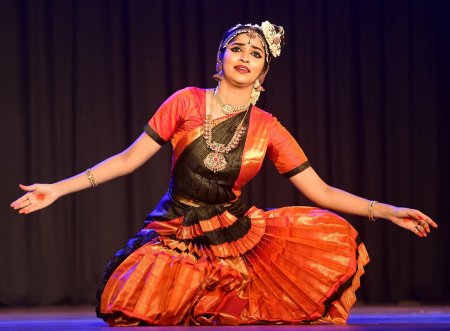 Sudharma Vaithiyanathan 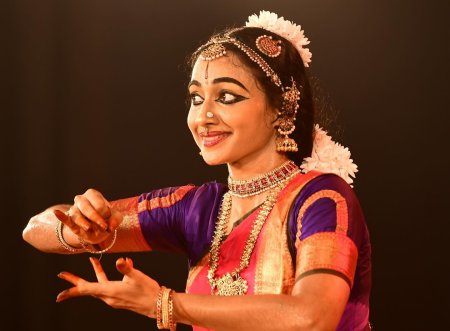 Harinie Jeevitha To begin a day watching the recital of a dancer who has consistently been composed, confident and unambiguous is bliss. I had it while sitting in front of Sudharma Vaithiyanathan whose performance right from the well-chiseled Jathiswaram to the majestic Thillana of Ponnaiyya Pillai proved to be spick and span. To borrow an appropriate word from Leela Samson, she was the embodiment of atakkam (etiquette) through and through. Harinie Jeevitha, the heart-throb of the young generation dancers and spectators, appeared next who started her concert with a Mallari in Sankeernajathi Jhampa. An advocate of the Melattur baani, her command over the angika is simply amazing. She is incredibly spontaneous in employing her angopangaprathyangas in mid and fast tempos. Little wonder, she has for years been a crowd puller. She presented the famed "Mohamana en meedhil," a loaded Varnam in raga Bhairavi and in roopaka talam. When it comes to satwikabhinaya, precisely the moods of a Viraholkhanditha Nayika, Harinie didn't seem to be deeply anchored. I don't recollect a specific moment in which she got fully engrossed in the sthayi bhava (enduring) of the Nayika. Nevertheless, the auditory support she received from the poignant singing of Srikanth Gopalakrishnan, deft strokes and fingerings on the mridangam by Bharadwaj and the melodious notes from the flute of Muthu Kumar more than offset the shortcomings. Aishwarya Balasubramanian, the disciple of Anitha Guha, proclaimed her artistic ingenuity and imaginative acumen when she conquered the stage with the Navaragamalika Varnam, "Swamiyai Azhaithodi vaa." While the distinctive tenor of her movement dynamics right from the thrikala jathi to the charana-swaras was mind-blowing, in the satwikabhinaya segment, Aishwarya revealed the luminosity of Lord Siva in the eyes of the Nayika through striking visual metaphors. There was probably no significant object left untouched by the dancer in the microcosm of the mountain Kailasa. Even in the oft performed Lalgudi Thillana in raga Mand, Aishwarya had something stimulating to offer to the audience. The accompanying artistes especially the seasoned singer Kaniyal Hariprasad, the veteran violinist Eswar Ramakrishnan and the highly talented young flautist Sruthi Sagar, contributed in no small measure to the charged recital. 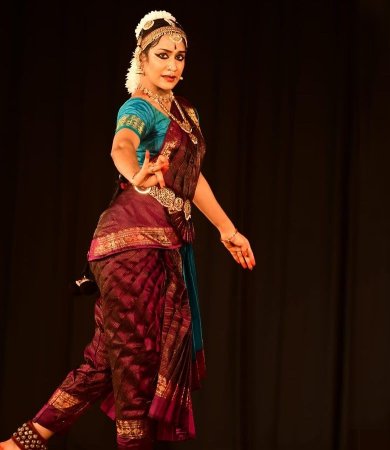 Aishwarya Balasubramanian 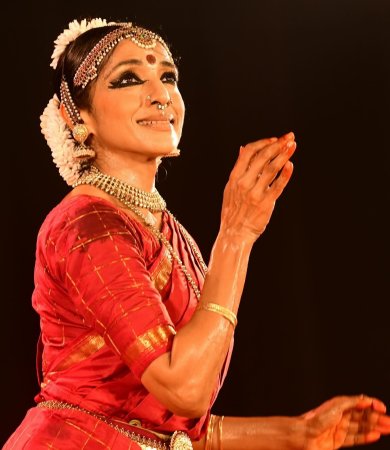 Meenakshi Srinivasan The highlight of the day was the Bharatanatyam recital of Meenakshi Srinivasan. Before beginning her recital, she briefed the audience the gist of the invocatory piece taken from the Saundarya Lahari of Adi Shankaracharya. I then wondered how would the dancer express the divine attributes of the Devi in intelligible visual frames. Meenakshi conveyed the full imports of the lines by her scintillating eye movements and nritta hastas. She then moved on to "Sarasa Ninu," the popular Tanjore Quartet Varnam, in raga Karnataka Kapi and in rupaka tala. Much against my expectation, her interventions with the craft and the content of the Varnam didn't have the requisite punch. "Sakhi he Keshi", the Geeta Govindam ashtapadi set to raga Shudhasarang, has become cliché ridden. Although Meenakshi did it convincingly the monotony caused by its triteness was irreversible. 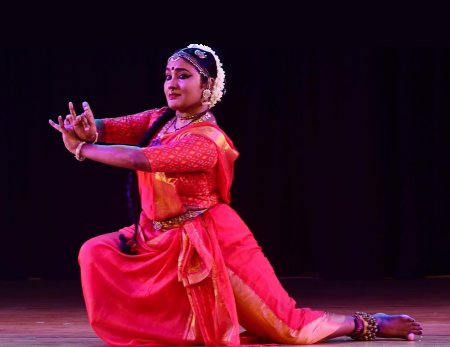 Sreelakshmy Govardhanan For want of immaculate performers, Kuchipudi, I am afraid, is registering a steady decline. However, a few dancers have come up to give it a new lease of life. Sreelakshmy Govardhanan is one among them who is devoted to what she does on stage. By presenting 'Krishna Sabdam' and 'Dharuvus from Bhama Kalapam', Sreelakshmy prudently touched upon the legacy of Kuchipudi. On the second day evening, Narthaki Nataraj, the direct disciple of Guru Kittappa Pillai, performed six items strictly adhering to the Margam for which her accompanying artistes gave their fair share of contribution. Her presentation of the "Mohamana" Varnam, though not pretty exciting, carried an unusual elegance in terms of the angika and the satwika abhinayas. I could come across in her the inexplicable grace of some of the elements of angika like the kulukku nadai which several dancers of the day have dispensed with. She can very well be the yardstick to trace the transformations / transmutations Bharatanatyam has undergone over the years. 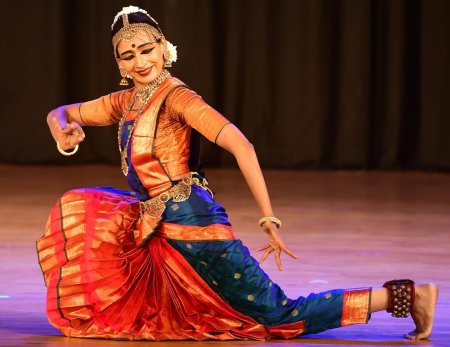 Medha Hari The fourth day of the festival began with the brilliant performance of Medha Hari. She is fundamentally the disciple of Anita Guha but currently being mentored by Priyadarsini Govind. What a heady combination! Right from "Bhogeendra Shayeenam" in raga Kunthalavarali to the Thillana in raga Purvi, Medha ruled the stage. On all counts she outwitted her peers and the subsequent generation of dancers. Her slender figure, infectious energy, intricately yet intriguingly interwoven adavus, degree of involvement in the text and the contexts and the meticulous selection of items made the recital most memorable. The Varnam she chose was the deceptively simple but all too familiar "Innum yen manam" of Lalgudi Jayaraman in raga Charukeshi. How did Medha defamiliarize it with her irreproachable treatment of its nritta, nritya and natya is beyond words. Her treatment of the charanam, "Kuzhal udhum azhagaa Kanna...." is just an example to cite in this context. The rendition of the jathis by Jayashree Ramanathan, the bhava laden singing of Satish Venkatesh and the astute strokes on the mridangam by Sakthivel Muruganandam considerably augmented the dancer's prowess on stage. 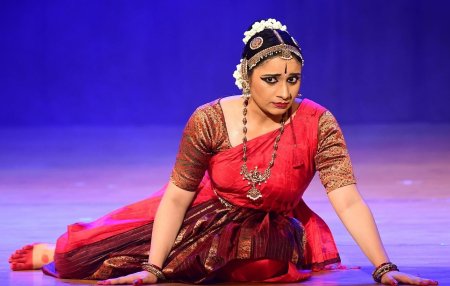 Meera Sreenarayanan Next came Meera Sreenarayanan with the conventional orchestra on her right side and the Nagaswaram and the Thavil on her left side handled by the renowned Mylai Karthikeyan and Adyar G. Silambarasan. She bracketed each of her items with a brief playing by the Nagaswaram and the Thavil. Here I am not taking up the question of propriety in bringing Nagaswaram and Thavil to the proscenium theatre. It is an interesting topic that can attract an eternal debate. Following a brief Mallari, Meera proceeded to the Varnam, "Mohalagiri meerudhe," in which the Nayika's pangs of separation with her Nayaka, Lord Muruga, was essayed applying multiple techniques. For instance, she went in for moments of deliberate silence while the vocalist lowered his voice to a whisper. Meera thereafter dared to provide visual language to the overtly erotic lyric of Irayimman Thampi, "Prananadhaneniykku nalkiya". She concluded her recital with the Thillana in raga Simhendramadhyamam. Here I could come across the dancer in her essentials. 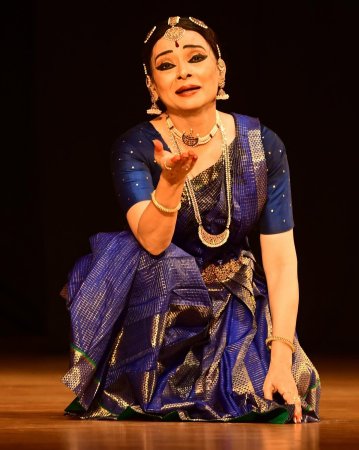 Malavika Sarukkai What makes the traditional Varnam transcend the test of time and space? The seamless interaction of its lyrics with the textual and the non-textual dance as well as with the music, vocal and instrumental. The esprit de corps between the dancers and the musicians is ideally realized only in the presentation of an acclaimed Varnam. To me there can be two valid reasons for the dancers to forgo the traditional Varnam in their recitals. 1. An irredeemable feeling of saturation. 2. A self-generated impression bordering narcissism that the dancer is more important than the dance itself. Malavika Sarukkai, one of the few most celebrated dancers in Bharatanatyam, started her performance with Sthiti-gati, a composition of Professor C.V. Chandrasekhar. The item epitomized her technical virtuosity and aesthetic propensity. The four items that followed were from different sources but the motif was Lord Krishna. One of her vinyasas, the Govardhanodharanam (lifting up of the mountain Govardhana by Lord Krishna) was a sheer delight to watch. The veteran vocalist, Murali Parthasarathy's poignant singing and the melodious phrases emanating from the mridangam of Nellai Balaji have always been a constant source of strength for Malavika. In fact, Balaji's switching over to various natas; mishram, chathurashram, thisram and khandam was a delicious treat to my ears. However, my humble prayer is that a dancer of her stature might show the magnanimity to present the traditional Varnam at least at the Music Academy. There are many youngsters in the field who admire her as an incomparable icon and look up to her as their friend, philosopher and guide. 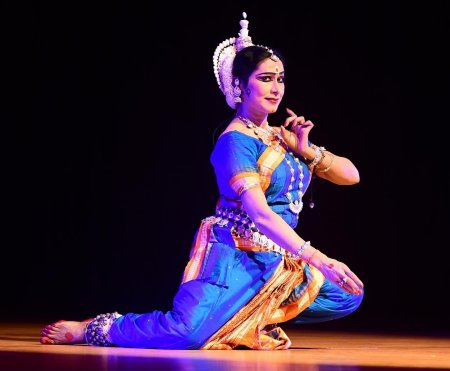 Sujata Mohapatra 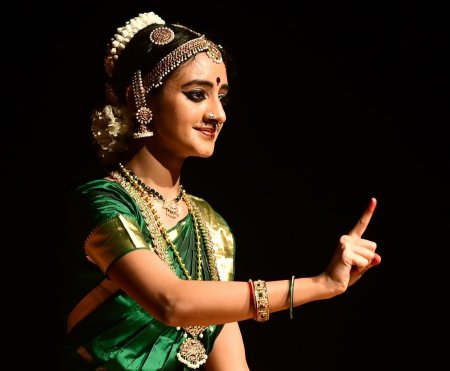 Mahati Kannan As a seasoned Odissi dancer, Sujata Mohapatra seldom disappoints her audience. This time too, she did the traditional items viz. Mangalacharan, Pallavi and so on. A change I noticed was her rendition of Swathy Thirunal's padam, "Chaliye Kunjanamo" as an abhinaya piece. On the fifth day of the fest, Mahati Kannan, the gifted young dancer, began her recital with Pushpanjali, the choreography of Dr. Padma Subrahmanyam and finished with the Thillana in raga Mahati, composed by Kannan Balakrishnan. As I am not conversant with the canons of Bharata Nrithyam, I refrain from making any comments on the distinctive items she performed in front of highly receptive beholders. The recital of Jyotsna Jagannathan was very much within the parameters of the traditional Bharatanatyam. In none of the items including the Varnam, "Samiyai azhaithu vaa di" of the Tanjore Quartet, did Jyotsna go overboard. In the prime time, Rama Vaidyanathan chose the acclaimed "Viriboni" Varnam as the piece de resistance of her recital. Rama is intensely fond of challenges. That might be the reason why she selected this rarely performed Varnam in which the Nayika addresses Lord Rajagopala of the Mannarkudi temple. With flower as a constantly recurring metaphor, Rama tackled it successfully. The Varnam deeply rooted in musical phrases and the concomitant intricacies, her singer Sudha Raghuraman delved into the nook and cranny of the raga Bhairavi. After the Varnam, she went in for a Tagore poem; a dialogue between a lover and his love. The piece distantly resembled a Javali having humorous undertones. Towards its very end Rama's expressive face spoke silently yet intensely to the animated spectators. 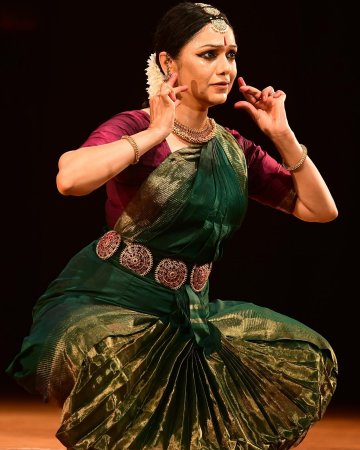 Rama Vaidyanathan 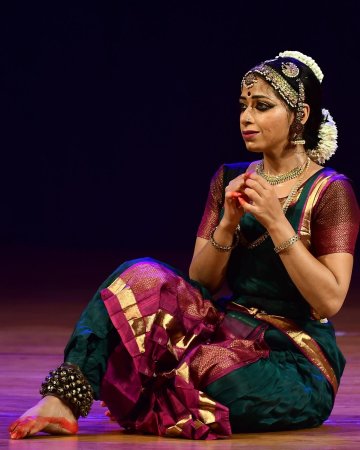 Apoorva Jayaraman Apoorva Jayaraman's performance on the following day consisted of items strikingly different in several respects. Prior to the Varnam, "Entanine" in raga Khamas and adi tala of Subbarama Dikshitar, she presented "Budham Ashrayami" in raga Nattakurunji and misra jhampa composed by Muthuswami Dikshitar. In nritta, nritya and natya, Apoorva could establish her sway effortlessly. The verse from Amaru Shatakam she presented carried a distinguishing flavor as it laid emphasis on the nuances of sringara rasa the visualization of which is rather difficult. Navia Natarajan's recital in the evening bore the unmistakable stamp of classicism. She too did the Varnam, "Mohamana yen meedhil" profoundly expressing the sentiments of the Nayika all the while retaining the poise and precision of the angika. Her explication of the charanam, "Maaran kanaigal tuvuran sharamaariyaai" was a bewitching visual idiom. The piece l liked most in her recital was M. Balamuralikrishna's Thillana in raga Bhoopalam. 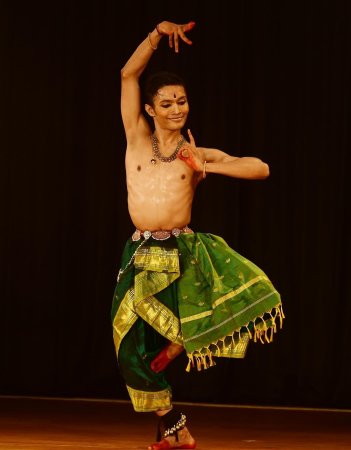 Pritam Das It is heartening to note that all the male dancers who came on stage invariably presented one or the other traditional Varnam. While each one of them revealed an unerring attachment to the geometrical grace of the nritta and the nritya, Pritam Das, the disciple of Rama Vaidyanathan, stood out not only by his sheer mastery over the angikabhinaya but his navigations through the contours of the satwikabhinaya. The thematic thread of the Varnam is the courtesan, here the heroine, addressing her ardent lover King Serfoji, whom she intensely longs for. Each line of the lyrics brimming with metaphors and images reveals her consummate passion towards the King. Suspecting hesitation on his part, the courtesan expresses her lust explicitly. There is dhwani (implications) beneath each padartha (word meaning). Hence it is not easy even for a highly articulate dancer to bring out its full import. The constraints of his physical features not withstanding, Pritam's thanmayee bhava (involvement) with the character was awesome. Profound was his rapport with the Saamaajikas from the very beginning of his recital till the very end. R.L.V. Hemanth Lakshman on the nattuvangam, Bijeesh Krishna, the singer, Charudatt, the mridangam player and Hariprasad Subramanyam on the flute duly empowered Pritam on stage. Parshwanath Upadhye, one of the most persuasive performers of Bharatanatyam today, spared no efforts to build up the Varnam, "Sarasa Shara Sundara" of Swathi Thirunal set to raga Neelambari and adi tala. The anupallavi and the charanams of this Varnam are replete with similes some of which refuse to synchronize with the codified language of dance. Look at these lines - "Oh Lord Padmanabha! How can I spend this autumnal moonlight without you? Oh, the one with glorious exploits!" Yet Parshwanath deciphered most of the lines into hasta mudras accentuated by appropriate movements. The famed Padam, "Naan oru vilayattu Bommaya" of Papanasam Sivan in raga Navarasakannada, which he performed afterwards was delectable to say the least. 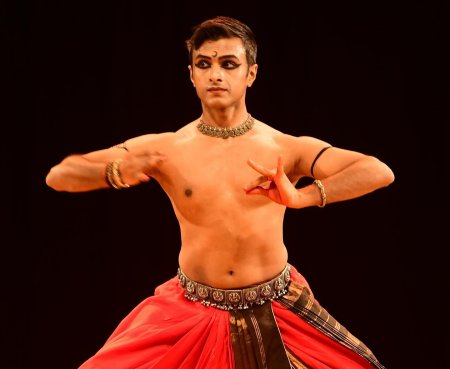 Parshwanath Upadhye 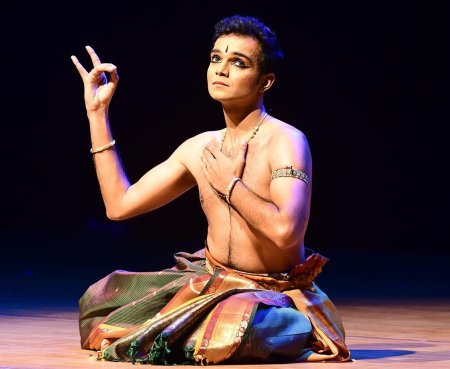 Bhavajan Kumar Beginning with "Ananda Natana Prakasam" of Deekshitar in raga Kedaram and tala misra chapu, Bhavajan Kumar presented all the items including the Varnam, "Swamiye azhaithodi vaa" immaculately. In the execution of each and every adavu and in safeguarding the symmetry, an essential feature of the movement dynamics in Bharatanatyam, Bhavajan was second to none. As a concluding note, I think it would be appropriate to pen a few words on the Rasikas who assemble at the Music Academy. One of the characteristics of the prekshakas (initiated spectators) there is their urge to give immediate feedback to the dancers. In the pre social media, pre-YouTube period, Alarmel Valli and Malavika Sarukkai had won standing ovation from them. A few others got it afterwards. Amongst the youngsters in the field, Parshwanath and Meera were the first ones to taste such a privilege. Last year Shweta Prachande could join that league. This year the audience appeared to be too broad-minded. They gave standing ovation to all the dancers. It seems they do believe in equality but not in discernment. 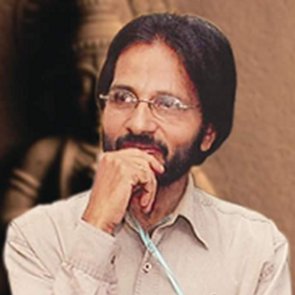 Former Deputy Registrar of Kerala Kalamandalam, V Kaladharan is also an art critic. He has published several articles at the academic level. 'From Meditative Learning to Impersonal Pedagogy' was published in an anthology 'Qui Parley' initiated and released by scholars and writers from the University of California, Berkeley. His articles on Indian performing arts and literature regularly appear in magazines and journals, and in the Friday Page of The Hindu. |